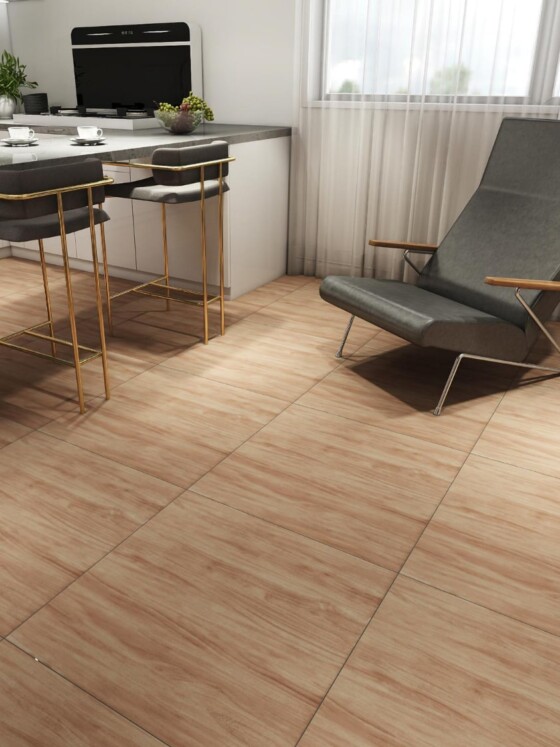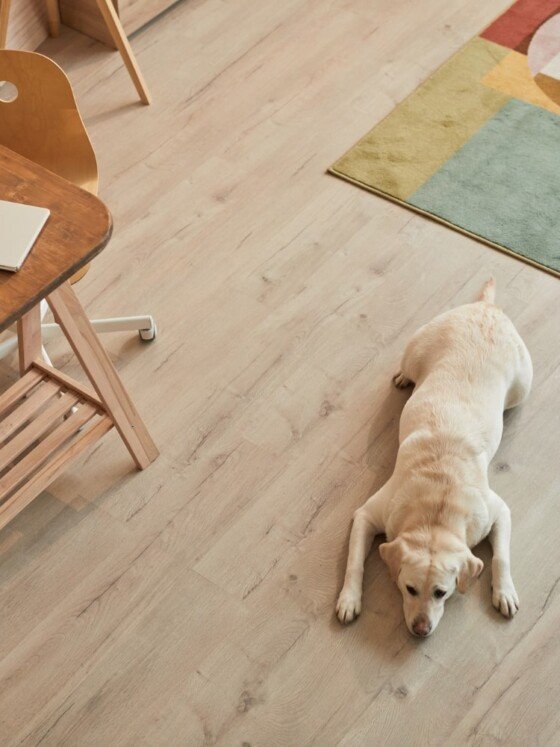Getting your own house is an amazing feeling and gives you joy like no other. You do still need to make a few important decisions after buying the house: furniture placement room mapping, among many others, including Wood flooring. It is important to know the different kinds of wood flooring, and today, we will delve into one of them: engineered wood flooring.
But what exactly is it? Let’s take a closer look at what it is, and at the end, we have some interesting FAQs about engineered wood flooring you’d be happy to know.
Engineered wood flooring is a type of wood flooring that is made up of multiple layers of wood veneer that are glued together. The top layer is made of real hardwood, while the bottom layers are made of high-quality plywood. This construction makes engineered wood flooring more stable and resistant to moisture than solid hardwood flooring. In this comprehensive guide, we will cover everything you need to know about engineered wood flooring.
Benefits of Engineered Wood Flooring Installation
When choosing your wood flooring plan, it is important to know exactly what you are getting into and what benefits it brings. From the installation process to how engineered wood flooring even helps to save money, learn about it all in the segments to follow.
Installation and Maintenance
One of the many benefits that engineered wood flooring brings is that it can be used right after the installation process is complete. Unlike with genuine hardwood, there is no need to wait for the wood to adapt to the room’s temperature and humidity. This makes the entire installation process fast, easy, and more convenient.
Maintenance of engineered wood flooring is also relatively easy. Regular sweeping and mopping with a damp cloth are enough to keep the floors clean. It is important to avoid using harsh chemicals or abrasive materials that can damage the flooring’s surface.
Radiant Floor Heating and Energy Conservation
For something of high quality, you would expect the energy consumption and costs to be high as well, but guess what, that is not the case here. Engineered wood flooring is also a great option for radiant floor heating systems.
A study conducted by Seo et al. (2011) showed that the thermal transfer performance of flooring depends on the material and its thickness. Engineered wood flooring’s construction allows for better heat transfer, making it an ideal choice for radiant floor heating systems. This can help reduce energy consumption and lower heating costs.
Types of Wood and Design
There are many different types of wood that can be used for engineered wood flooring, including oak, maple, and hickory. Each type of wood has its own unique characteristics, such as colour, grain pattern, and hardness. This allows for a wide range of design options and customization. Innovative designs are also becoming more popular in the flooring market.
It is said that the future of flooring market is bringing great change and is revolutionizing spaces with new and unique designs as well as unmatched durability. Engineered wood flooring is no exception, with many manufacturers offering unique designs and patterns that can add a touch of elegance and sophistication to any room.
Engineered Wood Flooring| Expectation vs. Reality
While there is a lot of hype surrounding engineered wood flooring, it is important to understand the realities of this type of flooring.
From The Forest, a flooring manufacturer, notes that some people may have unrealistic expectations of engineered wood flooring. For example, while engineered wood flooring is more resistant to moisture than solid hardwood flooring, it is still not completely waterproof.
Note: It is also important to note that the quality of engineered wood flooring can vary depending on the manufacturer and the materials used.
FAQs
- What is engineered wood flooring?
Engineered wood flooring is a type of wood flooring that is made up of multiple layers of wood veneer that are glued together. The top layer is made of real hardwood, while the bottom layers are made of high-quality plywood. - How is engineered wood flooring installed?
Engineered wood flooring can be installed using a variety of methods, including glue-down, nail-down, and floating. The installation method will depend on the manufacturer’s recommendations and the type of subfloor. - Is engineered wood flooring durable?
Yes, engineered wood flooring is very durable. Its construction allows for better stability and resistance to moisture than solid hardwood flooring. - Can engineered wood flooring be used with radiant floor heating systems?
Yes, engineered wood flooring is a great option for radiant floor heating systems. Its construction allows for better heat transfer, making it an ideal choice for these systems. - What types of wood can be used for engineered wood flooring?
Many different types of wood can be used for engineered wood flooring, including oak, maple, and hickory. Each type of wood has its own unique characteristics, such as colour, grain pattern, and hardness.
Conclusion
Engineered wood flooring is a great option for homeowners who want the look and feel of hardwood flooring with added durability and stability. With proper installation and maintenance, it can last for many years and add value to your home.
When choosing engineered wood flooring, it is important to do your research and choose a reputable manufacturer and installer to ensure that your expectations are met and exceeded. And if you want some more advice on wood flooring, Bespoke Wood flooring “wood” is a great choice.






Leave a Reply